Silvio Zanoli
Mathematical model of parameters relevance in adaptive level-crossing sampling for electrocardiogram signals
Jan 18, 2025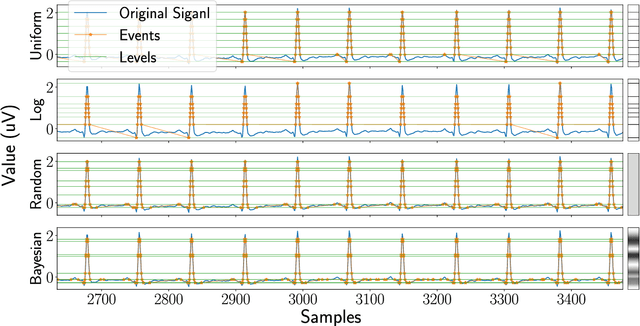
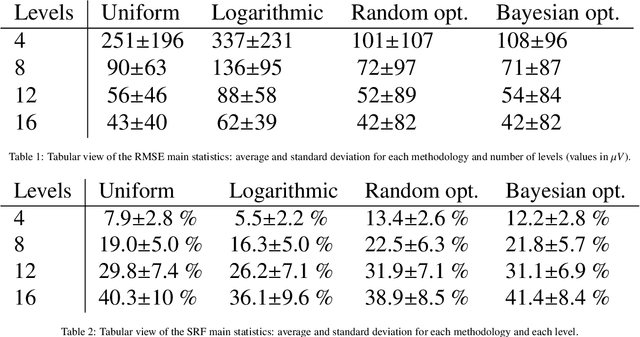
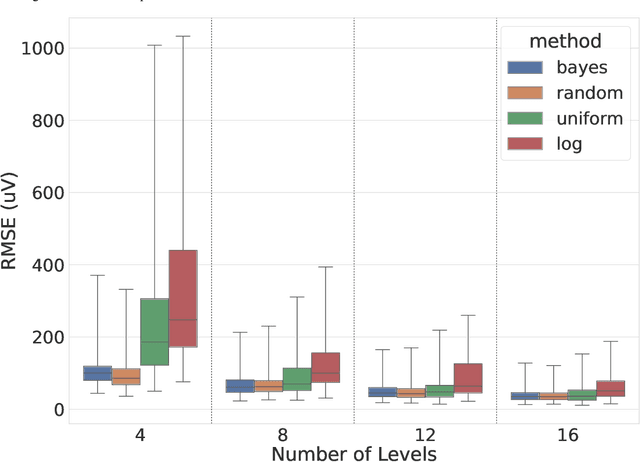

Abstract:Digital acquisition of bio-signals has been mostly dominated by uniform time sampling following the Nyquist theorem. However, in recent years, new approaches have emerged, focused on sampling a signal only when certain events happen. Currently, the most prominent of these approaches is Level Crossing (LC) sampling. Conventional level crossing analog-to-digital converters (LC-ADC) are often designed to make use of statically defined and uniformly spaced levels. However, a different positioning of the levels, optimized for bio-signals monitoring, can potentially lead to better performing solutions. In this work, we compare multiple LC-level definitions, including statically defined (uniform and logarithmic) configurations and optimization-driven designs (randomized and Bayesian optimization), assessing their ability to maintain signal fidelity while minimizing the sampling rate. In this paper, we analyze the performance of these different methodologies, which is evaluated using the root mean square error (RMSE), the sampling reduction factor (SRF) -- a metric evaluating the sampling compression ratio -- , and error per event metrics to gauge the trade-offs between signal fidelity and data compression. Our findings reveal that optimization-driven LC-sampling, particularly those using Bayesian methods, achieve a lower RMSE without substantially impacting the error per event compared to static configurations, but at the cost of an increase in the sampling rate.
Event-based sampled ECG morphology reconstruction through self-similarity
Jul 05, 2022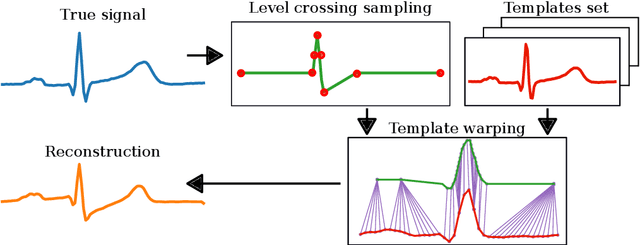

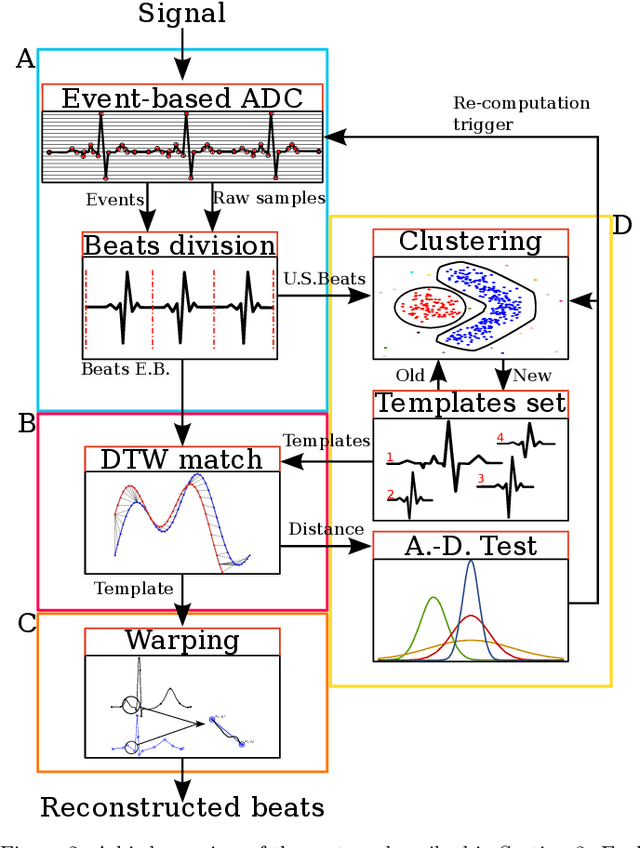

Abstract:Background and Objective: Event-based analog-to-digital converters allow for sparse bio-signal acquisition, enabling local sub-Nyquist sampling frequency. However, aggressive event selection can cause the loss of important bio-markers, not recoverable with standard interpolation techniques. In this work, we leverage the self-similarity of the electrocardiogram (ECG) signal to recover missing features in event-based sampled ECG signals, dynamically selecting patient-representative templates together with a novel dynamic time warping algorithm to infer the morphology of event-based sampled heartbeats. Methods: We acquire a set of uniformly sampled heartbeats and use a graph-based clustering algorithm to define representative templates for the patient. Then, for each event-based sampled heartbeat, we select the morphologically nearest template, and we then reconstruct the heartbeat with piece-wise linear deformations of the selected template, according to a novel dynamic time warping algorithm that matches events to template segments. Results: Synthetic tests on a standard normal sinus rhythm dataset, composed of approximately 1.8 million normal heartbeats, show a big leap in performance with respect to standard resampling techniques. In particular (when compared to classic linear resampling), we show an improvement in P-wave detection of up to 10 times, an improvement in T-wave detection of up to three times, and a 30\% improvement in the dynamic time warping morphological distance. Conclusion: In this work, we have developed an event-based processing pipeline that leverages signal self-similarity to reconstruct event-based sampled ECG signals. Synthetic tests show clear advantages over classical resampling techniques.
An Error-Based Approximation Sensing Circuit for Event-Triggered, Low Power Wearable Sensors
Jun 25, 2021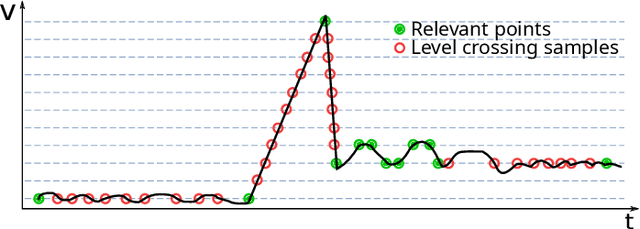
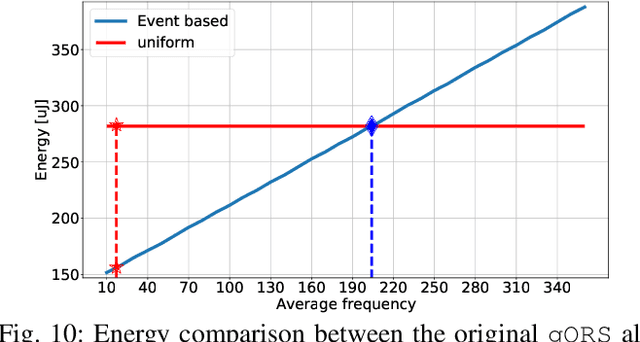
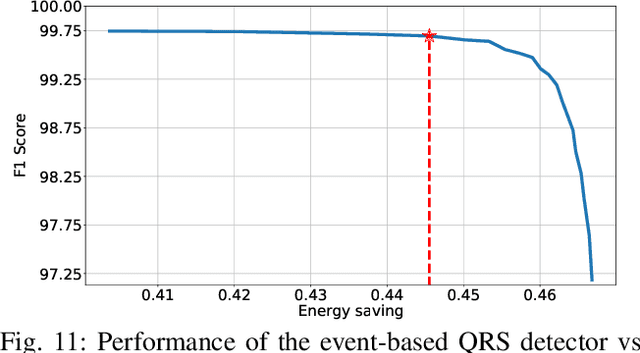
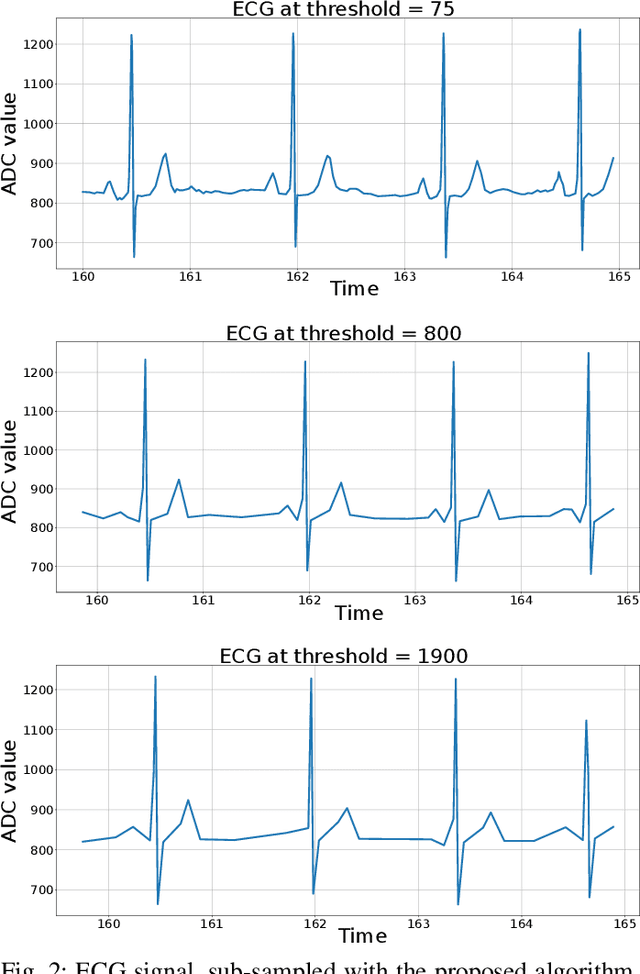
Abstract:Event-based sensors have the potential to optimize energy consumption at every stage in the signal processing pipeline, including data acquisition, transmission, processing and storage. However, almost all state-of-the-art systems are still built upon the classical Nyquist-based periodic signal acquisition. In this work, we design and validate the Polygonal Approximation Sampler (PAS), a novel circuit to implement a general-purpose event-based sampler using a polygonal approximation algorithm as the underlying sampling trigger. The circuit can be dynamically reconfigured to produce a coarse or a detailed reconstruction of the analog input, by adjusting the error threshold of the approximation. The proposed circuit is designed at the Register Transfer Level and processes each input sample received from the ADC in a single clock cycle. The PAS has been tested with three different types of archetypal signals captured by wearable devices (electrocardiogram, accelerometer and respiration data) and compared with a standard periodic ADC. These tests show that single-channel signals, with slow variations and constant segments (like the used single-lead ECG and the respiration signals) take great advantage from the used sampling technique, reducing the amount of data used up to 99% without significant performance degradation. At the same time, multi-channel signals (like the six-dimensional accelerometer signal) can still benefit from the designed circuit, achieving a reduction factor up to 80% with minor performance degradation. These results open the door to new types of wearable sensors with reduced size and higher battery lifetime.
 Add to Chrome
Add to Chrome Add to Firefox
Add to Firefox Add to Edge
Add to Edge